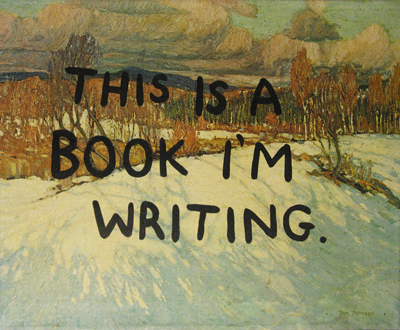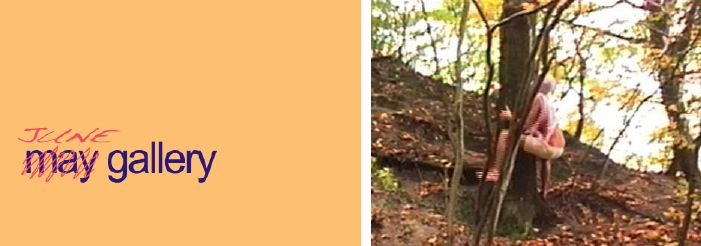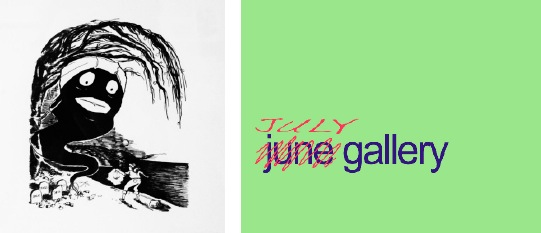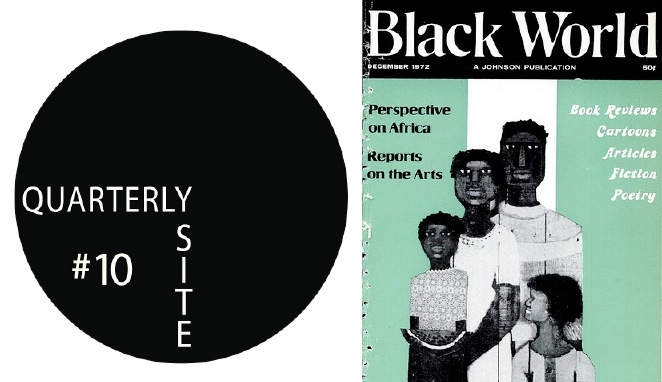
"This is a book I'm writing," 2010 by Billy Mavreas. Image: Reading Art - https://www.readingart.ca.
For my final post as blogger-in-residence, I would like to bridge my ideas about visual art and words, language and literature to my own practice as a curator and cultural producer. For the past five years, I have been working in an emergent capacity as both independent curator and founding director of the Twelve Galleries Project, a transitory, exhibition experiment. Many of the projects I conceive and/or organize straddle visual art and literature realms. The in-between space of these areas has fascinated me for some time, and I have found them to play a crucial role in my understanding of contemporary art in general. That visual art and literature hold dear so many of the same theoretical concerns and propensities for diversifying audiences’ understanding of the world-at-large seems a monumental point to draw out, especially in light of today’s fractured, internet-driven narratives.
A solo exhibition of short video installations, JUNE gallery, one of Twelve Galleries Project’s monthly site-specific projects, presented Carrick Bell’s Feel Good Foregone. These sculptural, cinematic presentations cited and subsequently scrambled multiple literary (and film) references, most of which considered the coded aspects of the homosexual cultural cannon. The description and thesis text for this show incorporated comparative analyses of exhibited work, The Bridge by Hart Crane, selected poetry by Frank O’Hara, and Fireworks by artist and filmmaker Kenneth Anger. While Bell’s work encompassed broad subject matter, including but not limited to intermediality, abstraction, color theory and the male figure, its reliance on cherished literary texts and intertextuality made for an incredibly rich experience.

JUNE gallery. Carrick Bell's "I don’t know what kind of ride you are but I’m not getting off," 2008-2009. Still from single channel video. Image: Twelve Galleries Project.
Significantly, Jasper Johns engaged in a coded collaboration through his work with literary figures Hart Crane, Frank O’Hara and Walt Whitman. Many paintings mined the secret literary canon of homosexual authors (a history hidden for obvious mid-century America homophobic reasons). In the painting Periscope (Hart Crane) Johns sampled Crane’s lyrics to mourn the poet whose death by suicide shocked the world. And after a dramatic break up with longtime partner Robert Rauschenberg, Johns painted In Memory of My Feelings – Frank O’Hara, a piece in which he flushes out some of the representational gestures made by O’Hara’s poem of the same name, memorializing both Johns’ own heartbreak, and the recently deceased O’Hara. Like Johns, Bell’s incorporation of artist and author shared histories amps up the historical and contextual conversations that I personally, and hope you too, find vital to contemporary art production.
The show immediately following Bell’s Feel Good Foregone was JULY gallery: Meg Onli’s Underground Railroad Project [Ed. note: Onli is also a columnist for the Art21 Blog]. In a much different way than Bell’s works, Onli’s project relied on literature’s ability to force cultures to systematically examine their mores. She worked with Harriet Beecher Stowe’s Uncle Tom’s Cabin to develop a conceptual framework for a walking tour of the original Underground Railroad. Fashioning herself into a character brimming with the same determination and inner-confliction of those in Beecher Stowe’s novel, Onli featured herself in a series of drawings that depicted her walk and the lonely qualities of a journey that was once grave and incredibly dangerous. By working so closely with a well-known novel and its historical contexts, this solo show acknowledged the importance of investigating and experiencing subject matter in a variety of forms to fully understand the social and political repercussions of creating artwork that deals with tumultuous themes, like those associated with the history of American slavery.

Meg Onli's "Character Studies: Haunted," 2007. One of a series of three inkjet prints on 8” x 10” paper. JULY gallery. Image: Twelve Galleries Project.
Onli and I have proven fruitful collaborators. In 2009 she founded Black Visual Archive (BVA), an online collection of critical writings contextualizing the work of African American artists through cultural and visual history that she manages with artist and intellectual Gracen Brilmyer. Together the Black Visual Archive ladies and I began a new project as part of Twelve Galleries Project’s Quarterly Site Series titled Quarterly Site #10: Black World 1970 – 1976. This exhibition exists in an online journal format to facilitate a full investigation of the post-civil rights era through the lens of the legendary Black World magazine. Black World, having been a publication dedicated to the mutual ideas of all art forms, especially those of visual art and literature, recognized and sought to emphasize the symbiotic relationship between image and language. What’s more, the magazine highlighted the two entities’ abilities to simultaneously complement one another and operate interchangeably, providing more texture, more depth and a multi-media approach to contemporary culture. Revisiting Black World’s interdisciplinary mission and cultural concerns, Quarterly Site #10: Black World 1970 – 1976 uses “text” as a theme and jumping-off point for BVA to consider the political and theoretical context of cultural production by American black communities during the dynamic six-year time period following the revolutionary civil rights and social movements of the late 1960s. In turn, Onli, Brilmyer and myself will contribute and curate images, essays, references, ideas, ponderings and more on a regular basis. Each bit of content opens to exhibition viewers/readers for further comment and discussion.

Quarterly Site #10: Black World 1970 - 1976. Black World Magazine, December 1972. Image: Black World 1970 - 1976.
For the final Twelve Galleries Project Quarterly Site Series show, I am in the midst of putting together an exhibition for the Hyde Park Art Center in Chicago that will be collaboratively curated by writers and more Zach Dodson, Dan Gleason and Caroline Picard. These curators are compiling a group show of artists who investigate the relationship between story and image, regardless of whether the process of materializing that relationship takes place by way of an actual correspondence, a translation from text-based narrative to image, or from image to text. These conversions are not necessarily literal; they are instead articulations on the space between the mediums. And most importantly, the artists working in this way continue to lessen the strict confines of discipline, giving a glimpse of contemporary art’s broader concerns and implications as well as the power it has to connect all facets of cultural life.
Ultimately, I hope that my facilitation of such projects will encourage even more contemplation on words and images, writing and art making, visual art and literature, contemporary art and everything.
*Because one must give credit where credit is due, “Painting with Words, Writing with Pictures” originates as the title of literary critic Franco Ricci’s brilliant book exploring visual description and perception in Italo Calvino’s stories.




Pingback: Painting with Words, Writing with Pictures* (My Final Take) | 全球汽车与工业设计资讯